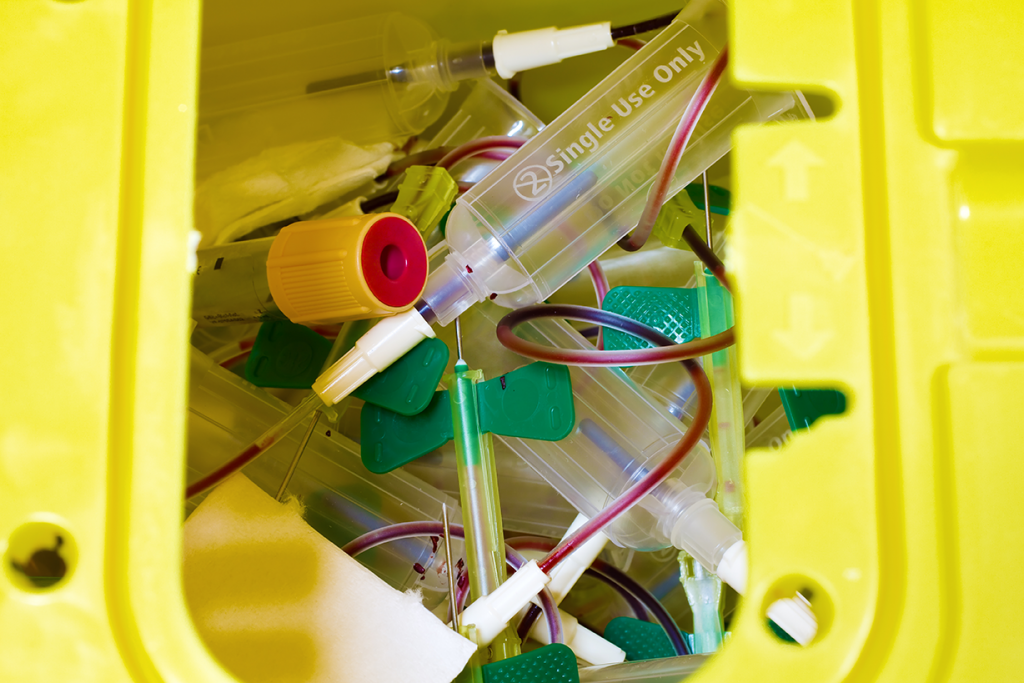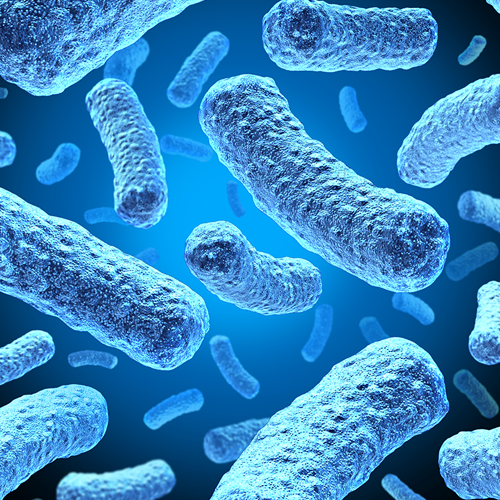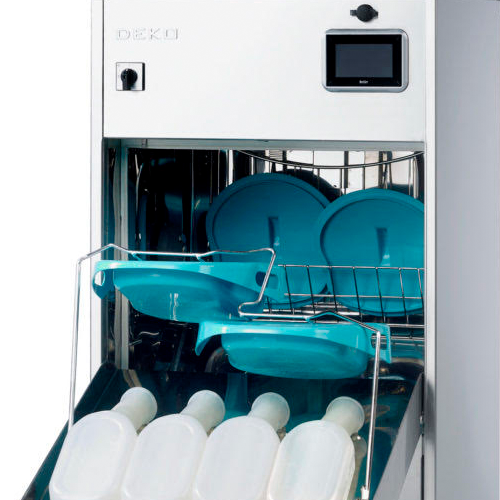 Any healthcare setting is at risk from infection breakouts. Bacteria and pathogens can spread quickly, and without robust infection control, staff and patients can find themselves exposed. Clinical waste can spread infection and should therefore be disposed of safely and correctly.
Any healthcare setting is at risk from infection breakouts. Bacteria and pathogens can spread quickly, and without robust infection control, staff and patients can find themselves exposed. Clinical waste can spread infection and should therefore be disposed of safely and correctly.
What is clinical waste?
Clinical waste is produced in healthcare settings such as GP surgeries, dental practices and hospitals. This waste can be put into different categories
 Infectious waste
Infectious waste
The WHO estimates that 15% of all clinical waste produced is infectious. This waste is contaminated with blood or other bodily fluids such as pus. It can include sharps, swabs, bandages, gowns and cultures of infectious agents from lab work.
There are stringent procedures in place when disposing of infectious waste. Sharps include anything used to puncture the skin and are classified as hazardous waste. They can spread blood-borne pathogens if a contaminated sharp pierces the skin, putting healthcare workers at risk daily.
Sharps are disposed of in a sharps container which is a closed box. This minimises contact with the needle or scalpel. They are then sent to an autoclave for incineration.
Offensive waste
Offensive waste is regarded as low risk to staff and patients and can be disposed of differently. This includes human waste collected in bedpans and urine bottles.
Although it is classed as offensive, we recommend that all human waste be treated as infectious. Human waste is at high risk of transmitting pathogens, especially if the patient has an infection.
Infections such as clostridium difficile, MRSA, E. coli and norovirus can spread quickly and are all found in human faeces. Bacteria and spores can survive on surfaces for many months and can easily be transferred to vulnerable patients.
And, because you can’t see them, it makes them very dangerous.
Staff can treat this waste as offensive if they know a patient doesn’t have an infection but is it worth taking the risk?
 How to dispose of human waste safely
How to dispose of human waste safely
The safest way to dispose of human waste is to use reusable bedpans and a washer disinfector. It’s the safest method for patients using the equipment and the safest method for healthcare workers to dispose of the waste.
There’s no emptying of waste into a slop hopper. This means no accidental splashing of potentially hazardous liquid onto surfaces and clothes.
It also means no hand washing and soaking of dirty receptacles, which keeps your staff safe and gives them time to care for patients.
With a washer disinfector, or a bedpan washer, you place the used receptacle into the machine, close the door, and it does everything for you.
The waste is disposed of safely into the sewerage system. Bedpans and urine bottles are cleaned and then thermally disinfected to ensure all bacteria are killed.
It’s all carried out in an enclosed space so that there is no danger of cross-contamination and this reduces the risk of an infection break out.
Keeping everyone safe
Dekomed understands how important it is to keep everyone safe and have spent over thirty years helping healthcare settings dispose of human waste safely and efficiently.
With a range of washer disinfectors on offer, you’ll find the perfect automated machine for your setting. We’ll even help you install it.
To find out more, call 0161 483 7333

 Infectious waste
Infectious waste How to dispose of human waste safely
How to dispose of human waste safely